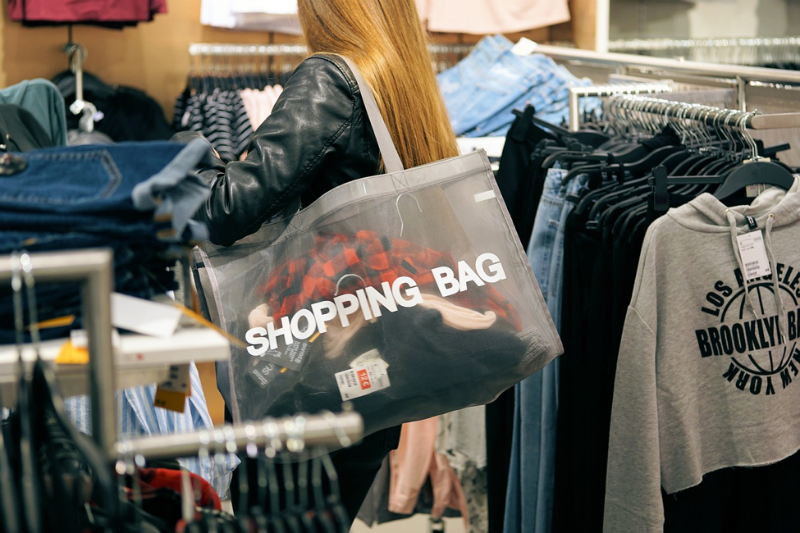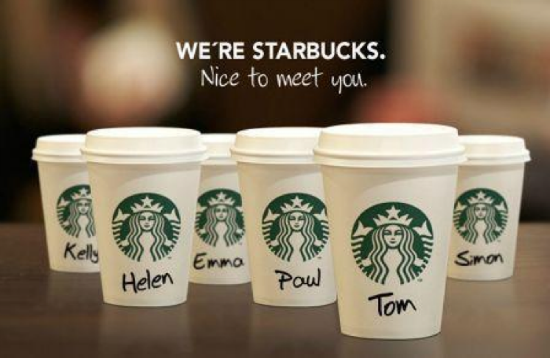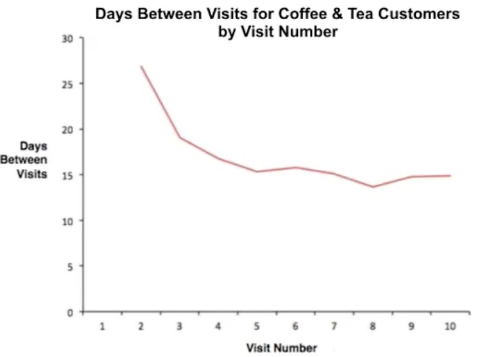How to create a successful loyalty program: approaches, technology and statistics

In our blog, we have already talked about how companies are fueling interest in their products and services through loyalty programs. Today we will talk about what approaches allow you to create really successful programs, how POS-technologies help with this and what results you can expect in numbers.
Why shops want to increase customer loyalty
According to the company-developer of loyalty systems in the field of retail Fivestars, 60% of buyers do not return to the store after the first visit. But if after the first time a person came to the point of sale again, then the probability of making further purchases is 80%. So an important task for every business is to attract customers to the store after their first visit.
')
To understand how to do this, it is important to understand why such customers "fall off." Fivestars experts identify three main reasons for such failures:
- The lack of contact between the business and the buyer is especially important in the case of a small business.
- The lack of personalization of being in the store - at a minimum, people love being called by name.
- The lack of interaction with customers after they leave the store - if the buyer left the store and never received any messages from him, this reduces the likelihood of a repeat visit.
These problems can be solved with the help of the introduction of loyalty systems - the emergence of a successful program allows you to double the number of store visits by new, already considered lost, and current customers.
Why loyalty and personalization are closely related
The power of personalization as applied to the increase in loyalty can be easily traced by the example of the world famous Starbucks coffeehouse chain. One of the main "chips" of the company is the personalization of a stay in a coffee shop. This effect is achieved in several ways, the most famous of which is the spelling of customer names in circles.

Despite the fact that this move is very well known, it did not appear immediately - until about 2010, only the name of the drink chosen by the buyer wrote on the mugs and glasses. A simple idea to write on the glass the name of the person who ordered it, has become extremely successful - customers appreciated that the company seeks to become closer to them.
In addition, since baristas constantly write the names of visitors in cups in coffee shops, it is better to remember regular customers - and may then no longer ask their names, which creates an even stronger link between business and customer.
To increase the reach of the potential audience, the company introduced gift cards that customers can give to friends and thereby encourage them to make purchases. In addition, Starbucks has a loyalty program that motivates coffee lovers to go to network places more often - a customer can deposit a certain amount of money on a special card in advance and then receive discounts when paying for it. Since the money is already on the card, the user wants to use it and at the same time get a discount.
To create a loyalty system, you can use the POS-technology
Simply introducing a discount system is not yet a loyalty program. To run a truly successful system, you must not just give the opportunity to save a little. It is important to take into account the preferences of specific customers. To solve this problem, you can, among other things, analyze the purchase history of a particular customer, which will increase the level of personalization and quality of service.
This is really important - if a person constantly goes to the same cafe and orders the same food, he will be pleased if the waiter asks “Do you like usual today?” And will not accept the same order for the hundredth time. This can be done through the implementation of a loyalty system that integrates with POS-equipment sales points.
This may sound unusual, but as modern smartphones are no longer just phones, allowing you to solve various tasks, so POS-systems have evolved far beyond the task of accepting payments. Now these tools can not only accept payments, but also work with gift cards, as well as upload data to external systems. All this facilitates analytics and the development of flexible loyalty programs. SKY-POS POS-terminals, for example, are equipped with a reader of discount and bonus cards, which allows a flexible approach to attracting customers and retaining them.
Although, of course, the terminal remains only iron, which cannot work with loyalty without having the proper software - in our case we are talking about the cash program “Profi-T” with the built-in module with the loyalty system (read more about this here ). The use of this bundle provides information support for business processes for managing customer loyalty:
- launching loyalty campaigns, in which customers earn points according to the rules they understand;
- targeted notification of customers about planned and existing loyalty campaigns;
- accumulation of information about customer purchases and their accumulated points.
This allows you to interact with customers after they leave the store. Now, after the buyer has left the outlet, he constantly receives personalized information about the ongoing promotions, and this is a guarantee of a return visit to the store. For example, the introduction of our solution in one of the women's clothing store chains allowed us to increase sales by 30% in six months, and also significantly influenced the image of the network in a positive way - there were more regular customers.

What loyalty programs give: some statistics
A common fact is the availability of discounts and awards within the loyalty system increases the frequency of customer visits. Fivestars statistics say that coffee house customers visit places more often if they provide them with loyalty programs. For example, if a cafe offers rewards to those who come for the fifth or tenth time, the closer this visit is, the less the buyer will want to wait. People will rush to get a reward sooner, as a result the number of days between visits will decrease.

Thus, the introduction of a well-thought-out and personalized loyalty program allows a business to earn more even in small time periods.
Not only in the store
An important point in the struggle for customers is maintaining communication with them outside the store. If a client once went to a sales point and joined a loyalty program, this opens up opportunities for him to re-activate. Having a contact information of a person, a retailer can not just remind about himself with the help of simple congratulations on holidays, but also tell about promotions, announce personal discounts.
If a customer hasn’t come to the store for a long time, the interaction may become more assertive. Despite the fact that some customers are annoying, in general, the numbers speak about the effectiveness of the approach. The graph below shows lines illustrating the number of visits to the store by customers who are actively working outside the store (green line) and those who are not worried about business (red). It is easy to see that customers with whom a company can interact due to the presence of a loyalty system go to stores twice as often.

Conclusion: the three elements of a successful loyalty program
In conclusion, we consider three elements that form the basis of truly successful loyalty programs.
- Personalization is very important - people love when they are called by name and remember preferences, this fact should be used when creating a loyalty system.
- POS technology can be used not only for accepting payments - store equipment can be integrated with loyalty systems in order to use customer purchases data to create personalized offers and analytics.
- Interacting with the buyer is necessary not only in the store - those companies that interact with customers after they have made a purchase, achieve the best results.
You can understand how the loyalty system is set up and marketing campaigns are managed in our video about working with the Profi-T system:
Source: https://habr.com/ru/post/331874/
All Articles